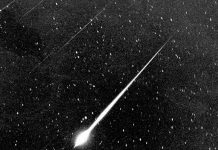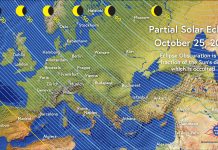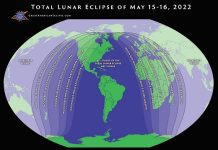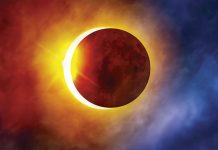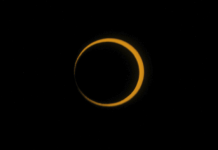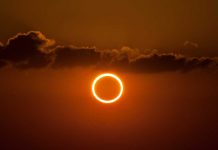2019’s first new moon falls on January 6 at 1:28 UTC – on the night of January 5 for time zones in the Americas. This new moon will pass between the Earth and sun, to stage a partial eclipse of the sun. The January 6, 2019 partial solar eclipse starts at sunrise in Asia, then travels eastward for roughly 4 1/4 hours, finally ending sunset at Alaska’s Aleution islands.
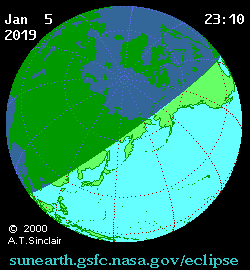
The eclipse will be visible from Asia (China, Korea, Japan, Russia, North Pacific Ocean and Alaska’s Aleution Islands). Depending on where you live within the eclipse viewing area, this eclipse will happen during the daylight hours on January 5 or 6.
Anyone within the moon’s penumbral shadow will see varying degrees of a partial eclipse.
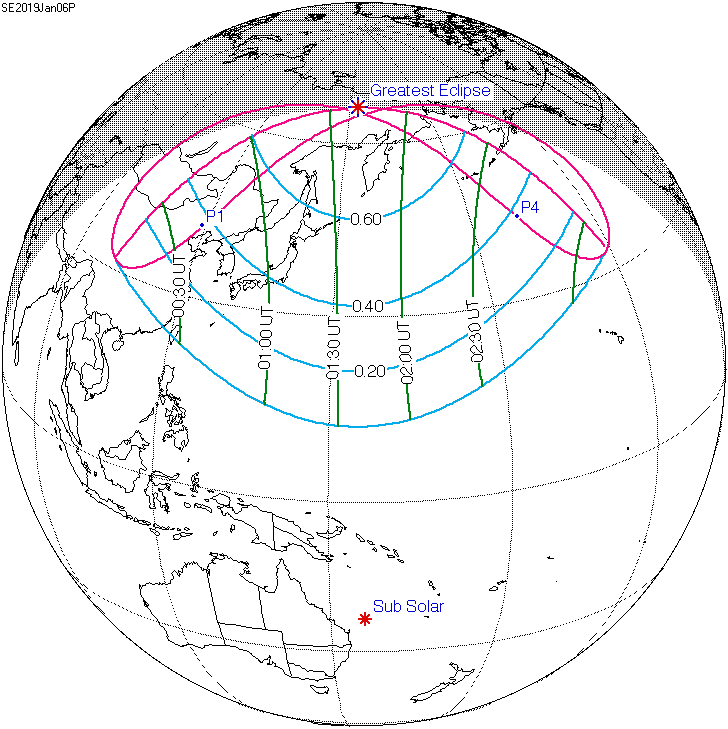
If you live within the eclipse viewing area, click here for eclipse times.
Eclipses always come in pairs
A solar eclipse always happens one fortnight (approximately two weeks) of a lunar eclipse. Sure enough, later this month – on the night of January 20-21, 2019 – there will be a total eclipse of the moon, visible in the Americas, Europe, Africa and the Middle East.
Often, but not always, a solar eclipse next comes after 6 lunar months (6 returns to new moon). Indeed, we find another solar eclipse taking place 6 lunar months later on July 2, 2019.
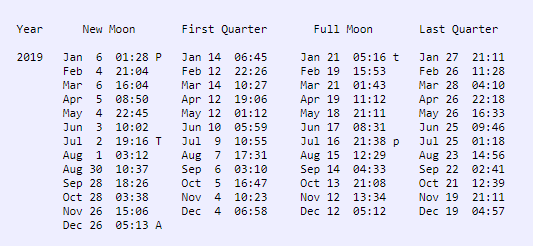
Likewise, another lunar eclipse often recurs after 6 lunar months (6 returns to full moon). Once again, we find another lunar eclipse occurring 6 lunar months later on July 16, 2019, or one fortnight after the the total solar eclipse of July 2, 2019.
Because the the first solar eclipse comes so early in the year in 2019 (January 5, 2019), that leaves enough time for a third solar eclipse to occur before the end of the year in 2019. Twelve 12 lunar months (12 full moons) after this year’s first solar eclipse falls with the full moon (and lunar eclipse) of December 26, 2019.
One fortnight (or one-half lunar month) following the year’s final eclipse on 2019 December 26 will bring about the first eclipse of 2020 on January 10, 2020. But since this eclipse will be a difficult-to-see penumbral eclipse of the moon, chances are that it’ll pass without any fanfare.
In summary, the new moon falling on January 6, 2019 at 1:28 UTC will pass between the Earth and sun, to stage a partial eclipse of the sun, visible from Asia, but must be watched proper eye protection.



